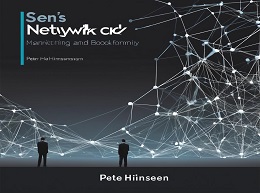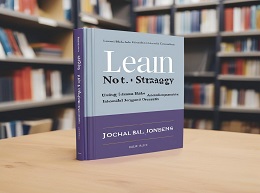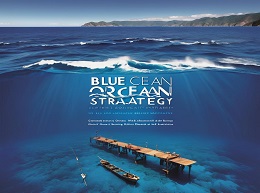The Art of the Start 2.0

"The Art of the Start 2.0" by Guy Kawasaki is a comprehensive guide to launching and growing a successful startup in today's fast-paced business landscape. Kawasaki draws on his decades of experience as an entrepreneur, venture capitalist, and startup advisor to provide practical advice and actionable insights for aspiring founders. In this detailed review, we'll explore the key concepts of "The Art of the Start 2.0," provide real-world examples, and reveal strategies for achieving startup success.
The Mindset of an Entrepreneur:
Kawasaki begins by discussing the mindset of a successful entrepreneur—the combination of passion, vision, resilience, and resourcefulness that drives startup founders to overcome challenges and pursue their dreams.
Example:
Consider the story of Sara Blakely, the founder of Spanx. Blakely's entrepreneurial journey began with a simple idea and a relentless drive to succeed. Despite facing numerous rejections and setbacks, Blakely remained determined and resourceful, eventually building Spanx into a billion-dollar shapewear empire.
The Art of Positioning:
Kawasaki emphasizes the importance of positioning your startup effectively in the marketplace—creating a compelling narrative that differentiates your product or service from the competition and resonates with your target audience.
Example:
Take the example of Airbnb, the online marketplace for lodging and experiences. Airbnb positioned itself as more than just a platform for booking accommodations it positioned itself as a community-driven platform that enables travelers to "belong anywhere." This positioning strategy helped Airbnb stand out in a crowded market and attract a loyal following of users.
Building a Compelling Pitch:
Kawasaki provides practical advice for crafting a compelling pitch that captures investors' attention and convinces them of your startup's potential for success. He emphasizes the importance of clarity, brevity, and storytelling in conveying your startup's value proposition.
Example:
Consider the story of Dropbox, the file-sharing service. Dropbox's co-founder, Drew Houston, famously pitched his startup to investors with a simple and compelling demo—showing how easy it was to sync files across devices. This demonstration captured investors' imaginations and helped Dropbox secure funding to fuel its growth.
Embracing the Art of Bootstrapping:
Kawasaki discusses the art of bootstrapping building your startup with minimal external funding and relying on creativity, resourcefulness, and hustle to achieve your goals.
Example:
Take the example of Mailchimp, the email marketing platform. Mailchimp was founded with just $1,200 in seed money and initially operated out of a small apartment. Through bootstrapping and organic growth, Mailchimp gradually expanded its user base and revenue stream, eventually becoming a market-leading platform without relying on external funding.
Navigating the Startup Ecosystem:
Kawasaki explores the intricacies of the startup ecosystem, including the roles of founders, investors, advisors, and mentors, and provides guidance on how to navigate these relationships effectively.
Example:
Consider the story of Elon Musk, the founder of SpaceX and Tesla. Musk has successfully navigated the startup ecosystem by surrounding himself with a strong team of engineers, investors, and advisors who share his vision for the future. This network of support has enabled Musk to overcome obstacles and achieve remarkable success in multiple industries.
In conclusion, "The Art of the Start 2.0" is a comprehensive roadmap for aspiring entrepreneurs looking to launch and grow successful startups. By embracing the mindset of an entrepreneur, mastering the art of positioning, crafting compelling pitches, bootstrapping effectively, and navigating the startup ecosystem, founders can increase their chances of success and achieve their dreams of building a thriving business. As readers apply the principles of "The Art of the Start 2.0" to their own entrepreneurial journey, they can unlock their potential and create a legacy of innovation and impact in the world.













